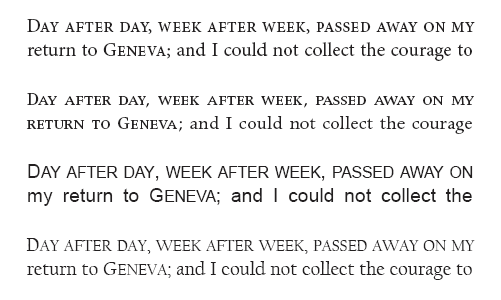
True small-capital letters require a font that supports small caps; i.e., the typeface has special characters designed to be approximately the same x-height as lowercase letters but using the uppercase letter shape. Fake small caps, created by reducing capital letters by 75 or 80 percent, stick out visually; they’re thin and spindly.
Although EPUB markup supports small caps (use “font-variant: small-caps” in the style sheet), not all ereader devices support small caps. One ereader where I was testing an e-book didn’t render small caps but instead made the text bold.
Below are four different typefaces. Can you tell which ones have true small caps?

First group: Minion Pro
Second group: Apollo MT
Third group: Arial
Fourth group: Californian FB